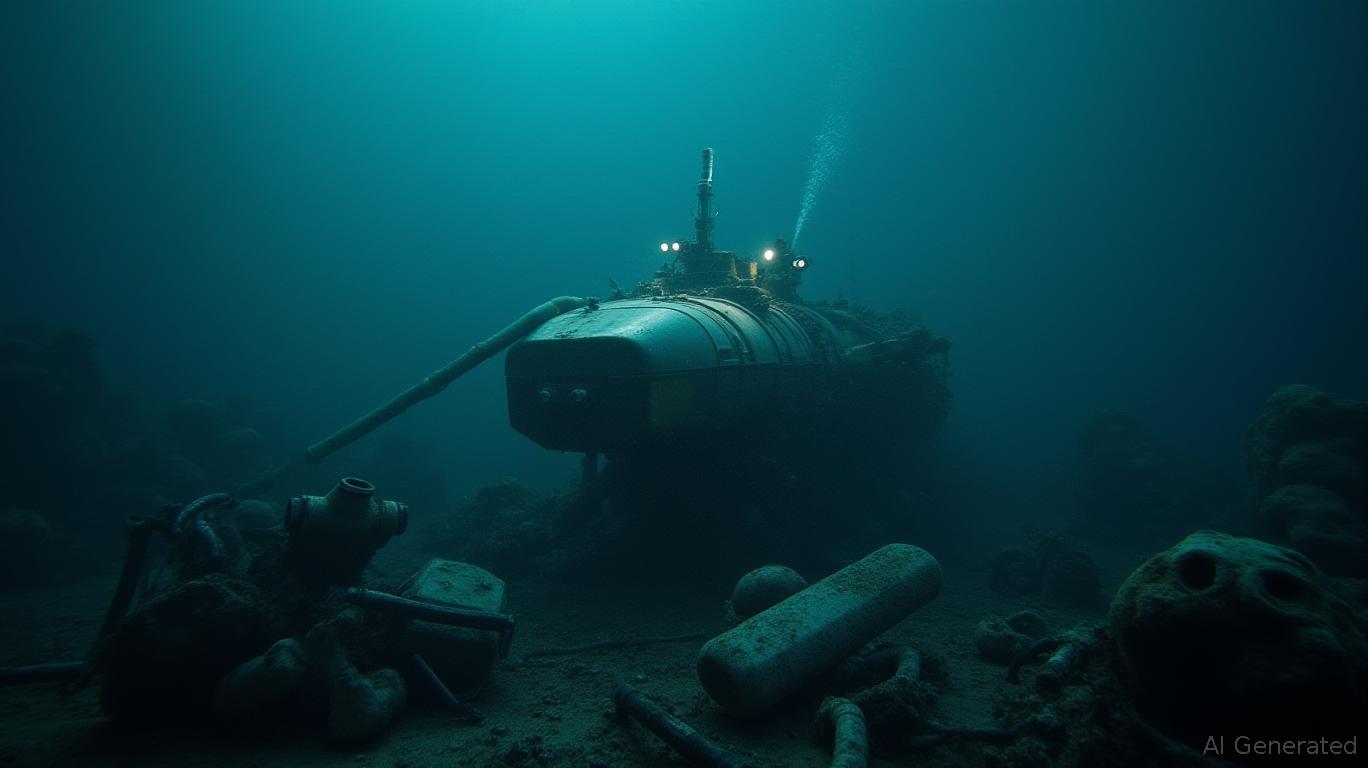Navigating the New Horizon: Marine Salvage Tech and Post-Bayesian Risk Mitigation Opportunities
The capsizing of the superyacht Bayesian in August 2024 marked a turning point for the maritime industry, exposing systemic vulnerabilities in design, operations, and risk management. This tragedy, which claimed seven lives and catalyzed sweeping regulatory reforms, has transformed the demand for specialized maritime risk mitigation services. From advanced robotics in salvage operations to AI-driven predictive analytics, the sector is now poised for transformative growth. For investors, this crisis represents a rare opportunity to capitalize on emerging technologies and regulatory tailwinds reshaping the seascape.
The Bayesian Tragedy: A Catalyst for Change
The Bayesian incident highlighted critical flaws in superyacht design and crew preparedness. A 72-meter mast, operational design gaps, and incomplete stability documentation left the vessel dangerously unstable in high winds. The subsequent salvage operation, which involved cutting the mast and recovering the hull, underscored the limitations of traditional methods. A fatal accident during this process—a diver's death in May 2025—further galvanized the industry to adopt automation and remote robotics.

Regulatory and Technological Imperatives
Post-Bayesian reforms are driving demand for safety-certified technologies and data-driven risk management. Key shifts include:
- Stricter Stability Standards: The UK's Marine Accident Investigation Branch (MAIB) is mandating enhanced stability criteria for superyachts, requiring real-time weather prediction systems and revised stability information booklets (SIBs). This benefits firms like IBM (IBM:NYSE), whose weather analytics are now critical for operational planning.
- Automation in Salvage: The use of remote-controlled submersibles and precision tools—such as those deployed by Hebo Maritimeservice (HEBO:OSLO)—is replacing risky manual labor. Salvage firms are now prioritizing non-invasive, technology-driven approaches, reducing liability and operational costs.
- Advanced Materials and Design: Companies like Teledyne Technologies (TDY:NYSE) are leveraging composite materials and structural reinforcements to address design flaws exposed by the Bayesian.
The Investment Case for Maritime Risk Mitigation
The confluence of regulatory mandates, technological innovation, and heightened public scrutiny creates a robust investment thesis:
1. Robotics and Automation Leaders
Firms like Hebo Maritimeservice and Sonardyne (a subsidiary of Teledyne) are at the forefront of robotic salvage and acoustic positioning systems. Their technologies reduce human risk and enable faster, safer recoveries. Investors should monitor partnerships, such as Sonardyne's collaboration with SMIT Salvage, which could expand their market reach.
2. Predictive Analytics and AI Platforms
AI-driven hazard detection systems, like those developed by Palantir (PLTR:NYSE), are critical for insurers like Pantaenius (PAN:GR) to assess risks and enforce stricter safety protocols. IBM's weather prediction tools also play a pivotal role in route optimization and storm avoidance.
3. Materials Science Innovators
Teledyne Technologies and Hexcel (HXL:NYSE) are advancing composite materials for hulls and masts, directly addressing design flaws highlighted in the Bayesian investigation.
4. Insurance-Linked Instruments
The Bayesian tragedy has spurred demand for parametric insurance, which pays out automatically based on predefined triggers (e.g., wind speed). Investors could explore ETFs or sector funds tracking maritime insurers and tech enablers.
Market Growth and Risks
The marine salvage and safety tech sector is projected to grow at a 6% CAGR through 2030, driven by aging offshore infrastructure and high-profile incidents. However, risks include regulatory delays, technological adoption costs, and geopolitical tensions affecting maritime traffic.
Conclusion: A Blue-Ocean Opportunity
The Bayesian tragedy has redefined maritime safety, turning a tragedy into a catalyst for innovation. Investors should focus on companies leading in robotics, predictive analytics, and advanced materials—sectors with clear regulatory tailwinds and limited competition. While risks exist, the long-term demand for safer seas and efficient salvage operations positions this niche as a blue-chip opportunity in the alternative investment space.
For the discerning investor, the seas of change are now navigable—and profitable—with the right tools.
Thomas Lott is a pseudonymous author specializing in deep-dive analyses of emerging industries. This article reflects independent research and should not be construed as financial advice.

Comments
No comments yet